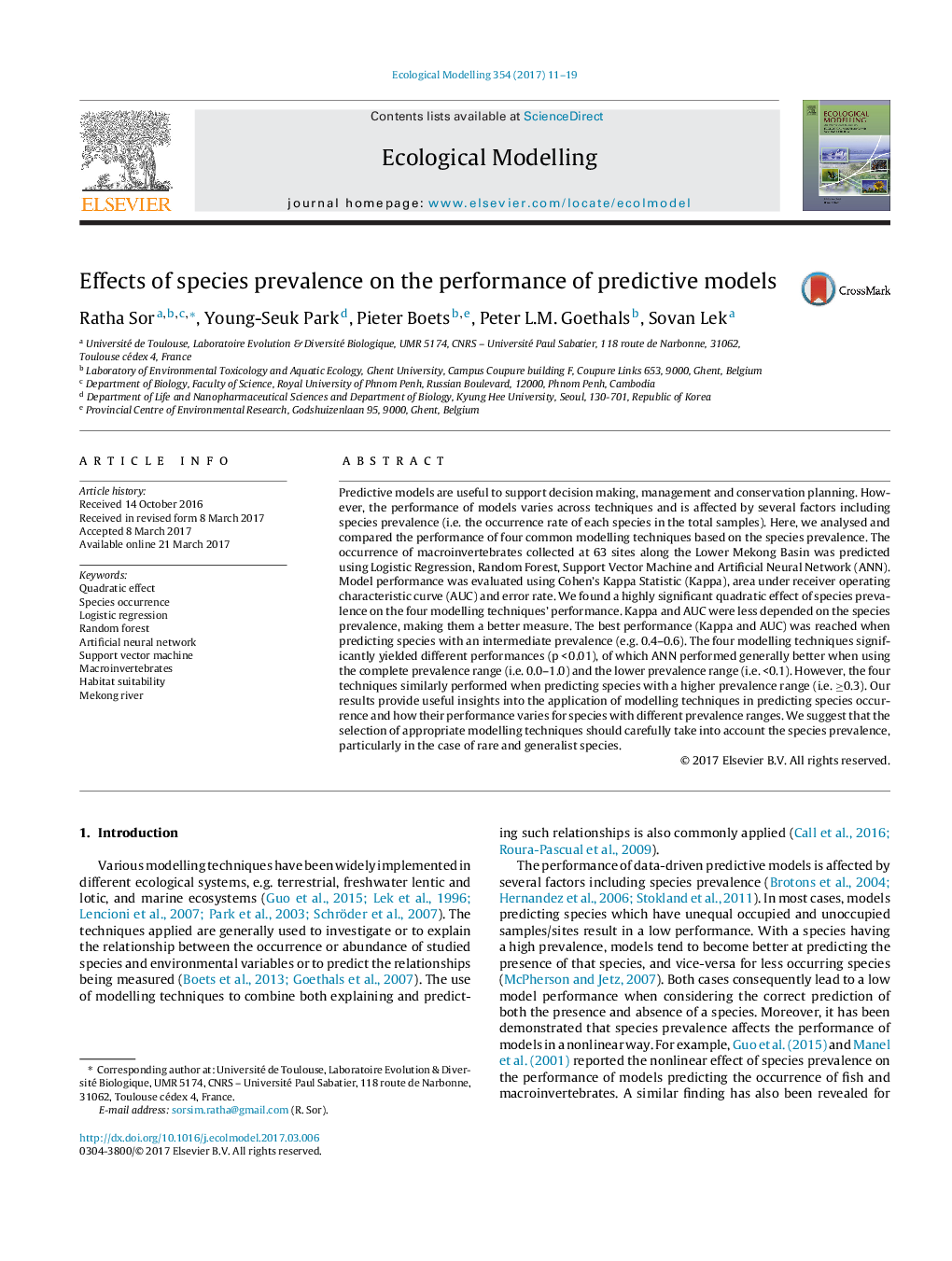| Article ID | Journal | Published Year | Pages | File Type |
|---|---|---|---|---|
| 5742182 | Ecological Modelling | 2017 | 9 Pages |
â¢The performance of four predictive modelling techniques was analysed and compared.â¢Species prevalence had a highly significant effect on models performance.â¢The maximum performance was obtained when predicting species with an intermediate prevalence.â¢Artificial neural network was more likely than other techniques to predict the occurrence of rare species correctly.â¢The four modelling techniques used similarly performed when predicting common species occurrence.
Predictive models are useful to support decision making, management and conservation planning. However, the performance of models varies across techniques and is affected by several factors including species prevalence (i.e. the occurrence rate of each species in the total samples). Here, we analysed and compared the performance of four common modelling techniques based on the species prevalence. The occurrence of macroinvertebrates collected at 63 sites along the Lower Mekong Basin was predicted using Logistic Regression, Random Forest, Support Vector Machine and Artificial Neural Network (ANN). Model performance was evaluated using Cohen's Kappa Statistic (Kappa), area under receiver operating characteristic curve (AUC) and error rate. We found a highly significant quadratic effect of species prevalence on the four modelling techniques' performance. Kappa and AUC were less depended on the species prevalence, making them a better measure. The best performance (Kappa and AUC) was reached when predicting species with an intermediate prevalence (e.g. 0.4-0.6). The four modelling techniques significantly yielded different performances (p < 0.01), of which ANN performed generally better when using the complete prevalence range (i.e. 0.0-1.0) and the lower prevalence range (i.e. <0.1). However, the four techniques similarly performed when predicting species with a higher prevalence range (i.e. â¥0.3). Our results provide useful insights into the application of modelling techniques in predicting species occurrence and how their performance varies for species with different prevalence ranges. We suggest that the selection of appropriate modelling techniques should carefully take into account the species prevalence, particularly in the case of rare and generalist species.
